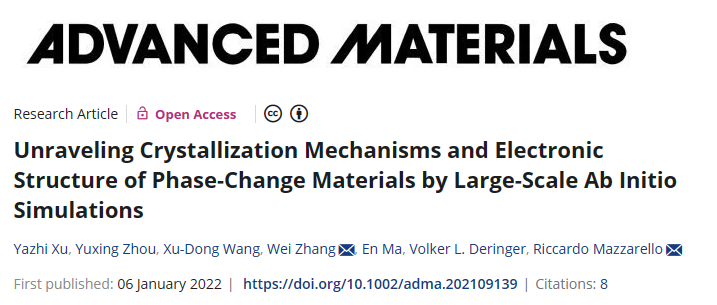
Ge–Sb–Te (“GST”) alloys are leading phase-change materials for digital memories and neuro-inspired computing. Upon fast crystallization, these materials form rocksalt-like phases with large structural and vacancy disorder, leading to an insulating phase at low temperature. Here, a comprehensive description of crystallization, structural disorder, and electronic properties of GeSb2Te4 based on realistic, quantum-mechanically based (“ab initio”) computer simulations with system sizes of more than 1000 atoms is provided. It is shown how an analysis of the crystallization mechanism based on the smooth overlap of atomic positions kernel reveals the evolution of both geometrical and chemical order. The connection between structural and electronic properties of the disordered, as-crystallized models, which are relevant to the transport properties of GST, is then studied. Furthermore, it is shown how antisite defects and extended Sb-rich motifs can lead to Anderson localization in the conduction band. Beyond memory applications, these findings are therefore more generally relevant to disordered rocksalt-like chalcogenides that exhibit self-doping, since they can explain the origin of Anderson insulating behavior in both p- and n-doped chalcogenide materials.
Link:https://onlinelibrary.wiley.com/doi/10.1002/adma.202109139